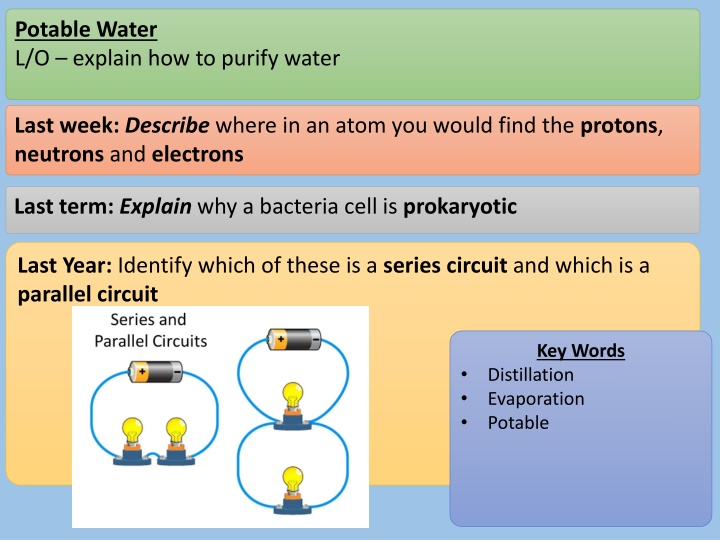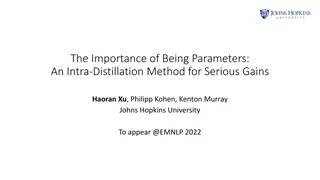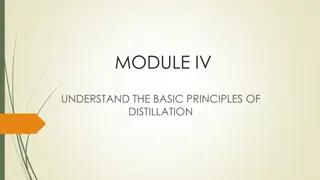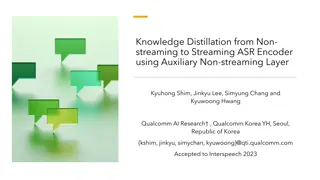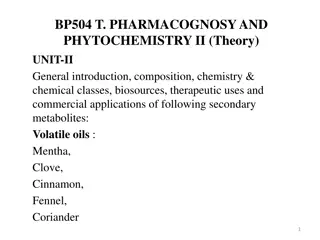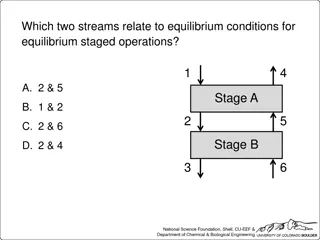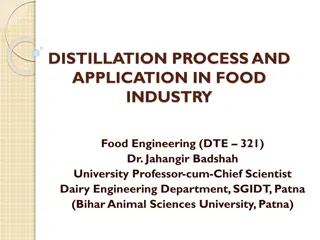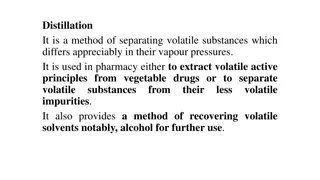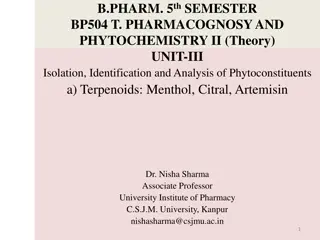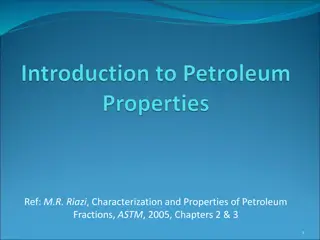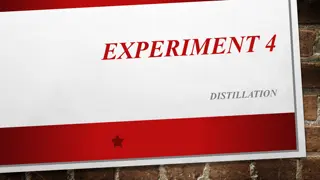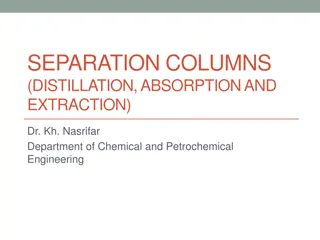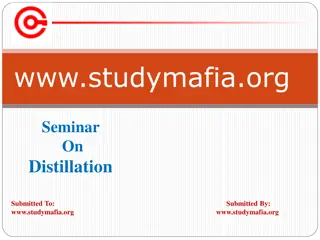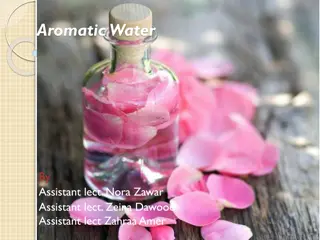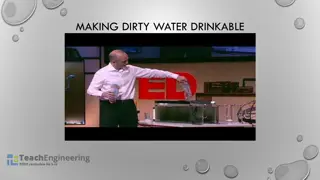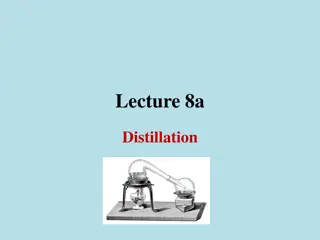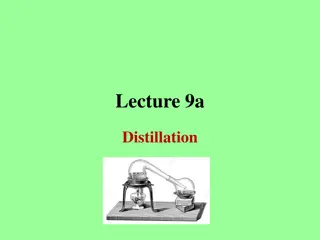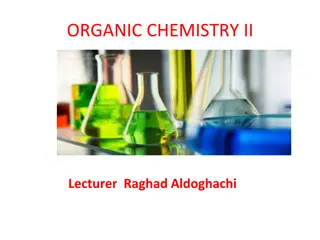Distillation Process for Purifying Water
Distillation is a method used to purify water by separating it from impurities through evaporation and condensation. It involves heating the water until it evaporates, then cooling the vapor to collect the purified water. This process ensures the removal of harmful substances and microbes, resulting in potable water safe for consumption.
Uploaded on Jul 17, 2024 | 1 Views
Download Presentation

Please find below an Image/Link to download the presentation.
The content on the website is provided AS IS for your information and personal use only. It may not be sold, licensed, or shared on other websites without obtaining consent from the author.If you encounter any issues during the download, it is possible that the publisher has removed the file from their server.
You are allowed to download the files provided on this website for personal or commercial use, subject to the condition that they are used lawfully. All files are the property of their respective owners.
The content on the website is provided AS IS for your information and personal use only. It may not be sold, licensed, or shared on other websites without obtaining consent from the author.
E N D
Presentation Transcript
Potable Water L/O explain how to purify water Last week:Describe where in an atom you would find the protons, neutrons and electrons Last term: Explain why a bacteria cell is prokaryotic Last Year: Identify which of these is a series circuit and which is a parallel circuit Key Words Distillation Evaporation Potable
Distillation Distillation is used to separate 2 different liquids. Liquids have different boiling points. You can heat up the mixture so one of them evaporates but the other one does not. You can then cool down the gas to condense it.
1. Set up your apparatus as shown in the diagram. 2. Adjust the Bunsen burner so that you have a gentle blue flame. The air hole should be about half open. 3. Heat the ink until it boils. 4. Collect the distillate in the test tube and note the temperature of the vapour.
Distillation was used to separate water from ink. Ink has a boiling point of around 200oC Bronze: 1. 2. Identify the temperature at which the distillation took place [1 mark] Describe how ensured no water vapour was lost [2 marks] Silver: 1. A student carries out distillation on a sample of blue ink. a) Predict how the appearance of the ink changes, and give a reason for your answer. [2 marks] b) During the experiment a hot liquid drips from the bulb of the thermometer. Suggest an explanation for a temperature rise from 83oC to 100oC as this happens. [1 mark] Gold: 1. Explain why simple distillation allows a pure solvent to be separated from a solution. [3 marks] A student distils a sample of ink. Devise a simple method to show that the liquid collected is pure water. Include the expected results in your answer. [3 marks] (there is a clue in the bronze questions) 2.
Potable water is water that is safe to drink. To make it safe to drink, you need to remove any harmful substances or microbes from it. https://www.youtube.com/watch?v=PDeiRlQvWnM Distilled water is pure water, with no other substances in it.
Purifying Sea Water Purifying sea water requires a lot of energy. It is carried out on a large scale when resources are plentiful, or when pure water is scarce. Due to the high energy requirement it is avoided if possible. Water that is safe to drink is called potable
More often, drinking water comes from rivers or aquifers (underground water sources). It is often stored in reservoirs. This water often contains leaves, twigs, soil, grit, salts, pesticides, fertilisers, bacteria and other microorganisms.
What problem could a reservoir of water have during the summer? https://www.youtube.com/watch?v=2xtX8vaASek
Bronze: 1. Explain how pure water can be produced from salt water 2. Describe the stages of producing drinking water in the UK Silver: 1. Explain why chemical analysis requires distilled water to be used 2. Produce a flow chart or diagram of the steps used to make drinking water in the UK. Include the key words: Chlorination Filtration Sedimentation Gold: 1. Transformthe stages of water purification into a flow diagram 2. Fresh water is treated to make it safe to drink. Soluble and insoluble substances are removed during this treatment, and chlorine is added to kill harmful bacteria. Explain two reasons why samples of the treated water are tested regularly.
Progress Questions 1. Look at the table below. Which substance is a gas at 90oC? Ethanol Water Iodine Melting point -114 0 114 Boiling point 78 100 184 2. Identify the name of the change of state being described below: During this process, particles gain enough energy to break free from their fixed positions. After this change, the particles stick together, but are free to move past each other. 3. How many different phases are used in chromatography?
